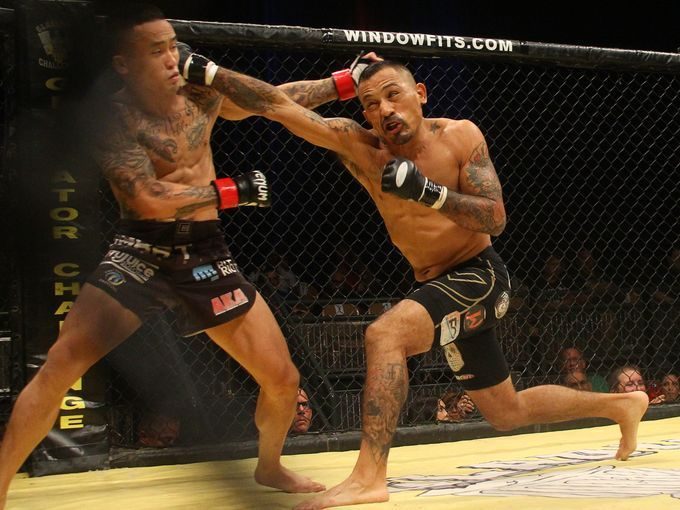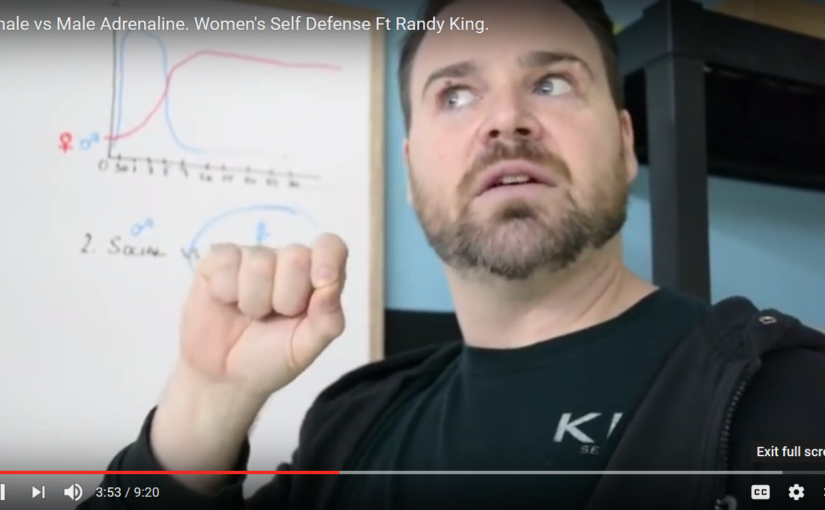Every self defense program I’ve seen so far has an escape protocol to it; it has some part in the curriculum that mentions that escaping is a great idea, how to escape, where to escape, and what to do. I find, though, that most people don’t actually train to escape, and this becomes quite the issue when it comes to conditioning-type training. If you are part of the relatively new school of conditioning-based training, operant conditioning, or response-based training to stimulus, it is very important that you give your students the opportunity to escape, and reward them for escaping when you’re training the drills. A lot of instructors pay lip service to escape drills – they say that you should have an escape plan, you should have an evasion plan, you should make sure you know what’s going on, you should be able to de-escalate – but then no training time is devoted to the skills of escaping, evading, or de-escalation!
What I find in of a lot of self defense programs is that they are still just a fight program. To use the paradigm that Rory Miller set up in his book Facing Violence, there are seven things that must be considered for self-defense. You need to understand the legal and ethical ramifications, you need to understand violence dynamics, you need to understand escape and evasion, you need to understand operant conditioning, you need to understand “the freeze”, you need to understand the fight, and then of course, the aftermath of all these things. On this paradigm, which I find is the best I’ve seen so far for self-defense, escape and evasion is in the first three things you need to learn! Everybody talks about it, but it seems nobody actually does it. So, when training with your students, you need to make drills where escape is the best option, and it is a rewarded option – running away is okay! Redefining a win becomes very important.
I want you to understand that most of the time, when people come to a martial arts/self-defense class, they expect to learn the fighting part of the situation. But if they’re only learning the fight part, it’s just martial arts, we’re just passing a system down. We’re just showing them that there are ways to deal with violence, but when people get into violent situations, there’s always a lead up, and then a follow up portion. Understanding the lead up to self defense situations is far more important than the self defense techniques themselves. Saying this, you might do every single thing right, you can pay attention, you can follow all the rules, you can know who the bad guys are in your neighbourhood, you can plan escape routes, you can know where the fire escapes are, you can understand where to run and how to run, you can have a great sprint time, and you can still get attacked. I’m not saying that this is going to make you invincible. Understand that there are times when the fight has to happen, but that’s not always the case, and in fact it’s rarely the case.
Getting your students familiar with the mechanisms ahead of time, making sure they understand how people attack, making sure they understand violence patterns, making sure they understand how to run, and where to run, is hyper important. It can be really hard to add this aspect into your curriculum, especially if you like the kicking and the punching and the choking and the throwing. It can be very hard to add some kind of escape drill, because maybe you feel like it’s not fun for your students, maybe you think just paying lip service to it is okay. I’m here to tell you that it’s not okay. It’s your job to build drills that use escape, or that give your students the opportunity to escape.
Something we talk about all the time is that 60-80% of human communication is body language. That includes task-based stuff, so if you say every day “Oh, and don’t forget to escape” but you never let your students physically escape, and you never wire their brains for escape, they won’t believe that escaping is a proper option. When the brown matter hits the fan, they’re going to have trouble going to an escape pattern, as opposed to an attack pattern. Attack patterns are important, but I think escape patterns are even more important, especially in the real world. Yeah, it’s great to be Rambo and beat the bad guy up, but almost every fight comes with hard-won knowledge. Every single fight you’re in, you might hurt yourself, you might break a bone, you might twist an ankle. All these things can happen, and they will affect your life outside of that fight. Most people focus on the thirty seconds to a minute of most violent encounters, where the outside surrounding part of it is much more important. So – how do you teach people to escape and evade? By building escape drills into your curriculum.
There’s only really four things you can do in a fight. You can escape, you can control them, you can disable them, or you can lose. Obviously losing is not on the table – you don’t want to train your students to lose, there’s no point in putting reps into losing. You can choose to lose, you can choose to submit, you can do that, that is fine. You can choose to curl up in a ball and get kicked, you can choose to let people do what they’re going to do to you, and that also can be a viable strategy. You may have been training them in disabling an attacker, you’ve been training them in kicking and punching, you’ve been training them how to restrain people, but you’re taking one-third or one-fourth of their options off the table if you’re not teaching them to escape.
You need to teach your students where to escape and how to escape, and how to map a pattern in time and space to get away from the attacker. You could build a drill where it’s “all right everybody, you’re going to do your counter ambush drill, you’re going to do your favourite setup and instead of going to your follow-up I want you to escape, and I want you to escape to a doorway.” The problem with this is, setting a fixed position for an escape is beneficial for the first one or two reps, but the human brain is lazy, it’s a pattern recognition machine. Its job is to create the most efficient pattern possible. As soon as you create one static place in your gym to run to, after two or three reps the brain is just going to have a pattern to do that and they’re no longer developing the skill set to escape.
You also need to define the parameters of escaping. If we’re escaping from asocial violence, we obviously want to run towards lights and people. More people means more witnesses, and more witnesses usually prevents asocial violence. Lights also mean more people that can see you. If you are trying to stop social violence, you are going to try and escape away from crowds, because if it’s social violence and I run into a crowd of people, and the other person’s trying to fight me and they’re trying to gain status in their group, the more people that watch, the better it’s going to be. So for social violence, you need to get away from the surrounding people, you need to create an environment where they’re not going to gain the social standing they need. Identifying the type of violence is a whole different article – there’s already a number of them in this publication about that. Just understand you need to define the parameters of escape, what escaping is, lights and people, or away from the people who are trying to fight you.
There is a drill I have created that rewards escape, and this is by far the drill that is most stolen from me by every other instructor who meets me, so I definitely want to give this drill to you. I call this drill the “High-Five Drill”. This is a great solution to the problems mentioned above.
For this drill, we start with a person attacking you, and you do whatever movement pattern you’re working on that day, if you’re working a pass or a sweep or a throw or whatever, doesn’t matter. After the student has done the technique, I want them to run, and they’re going to run to an instructor. Why we call this a high-five drill is very simple – the instructor is going to walk around the room holding up their hand in a high-five position, and they’re going to keep constantly changing position and moving around. This forces the student to actually look and find the person, to scan the environment so they find the safe path, and then they have to get to it. The bigger the group you’re in, the better this drill gets. The reason is you get every single person in the room doing the drill at the same time – it’s a “you go, I go” drill. So, my partner attacks me, I do whatever technique I’m working on, I put them on the ground, I do my counter ambush, etc. Then I have to scan the room and find the person who has the high five, and I have to get to that person as fast as possible in the safest way possible.
The rules of the game are simple. I have to find the quickest, safest way to get to the high five person. I have to do the high five from the front, not the side or the back, and this is for the safety of the person doing the high five, and I cannot bump or smash into any other person in the room. In this game, the other people are barriers, rather than people. In real life, you could obviously smash your way through people to escape, but for this drill these people are barriers, corners, alleys. We need to move around these “human pylons” in order to map a safe escape path.
In closing, what I want you to do is make sure your students have an escape pattern, have the parameters and goals of where to escape, and then have a training regimen that rewards the fact that they can escape, and then you’re teaching a true self defense program.






